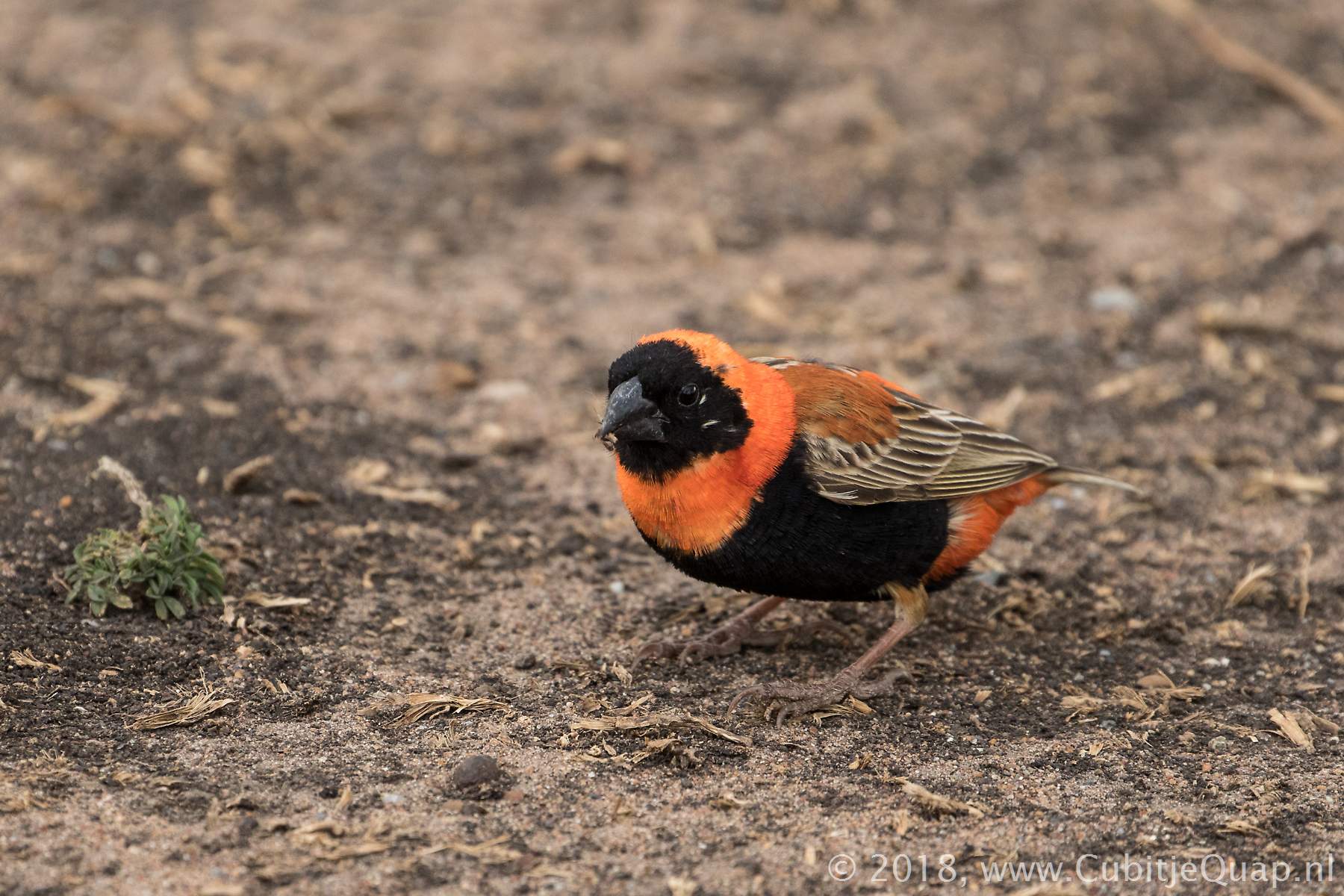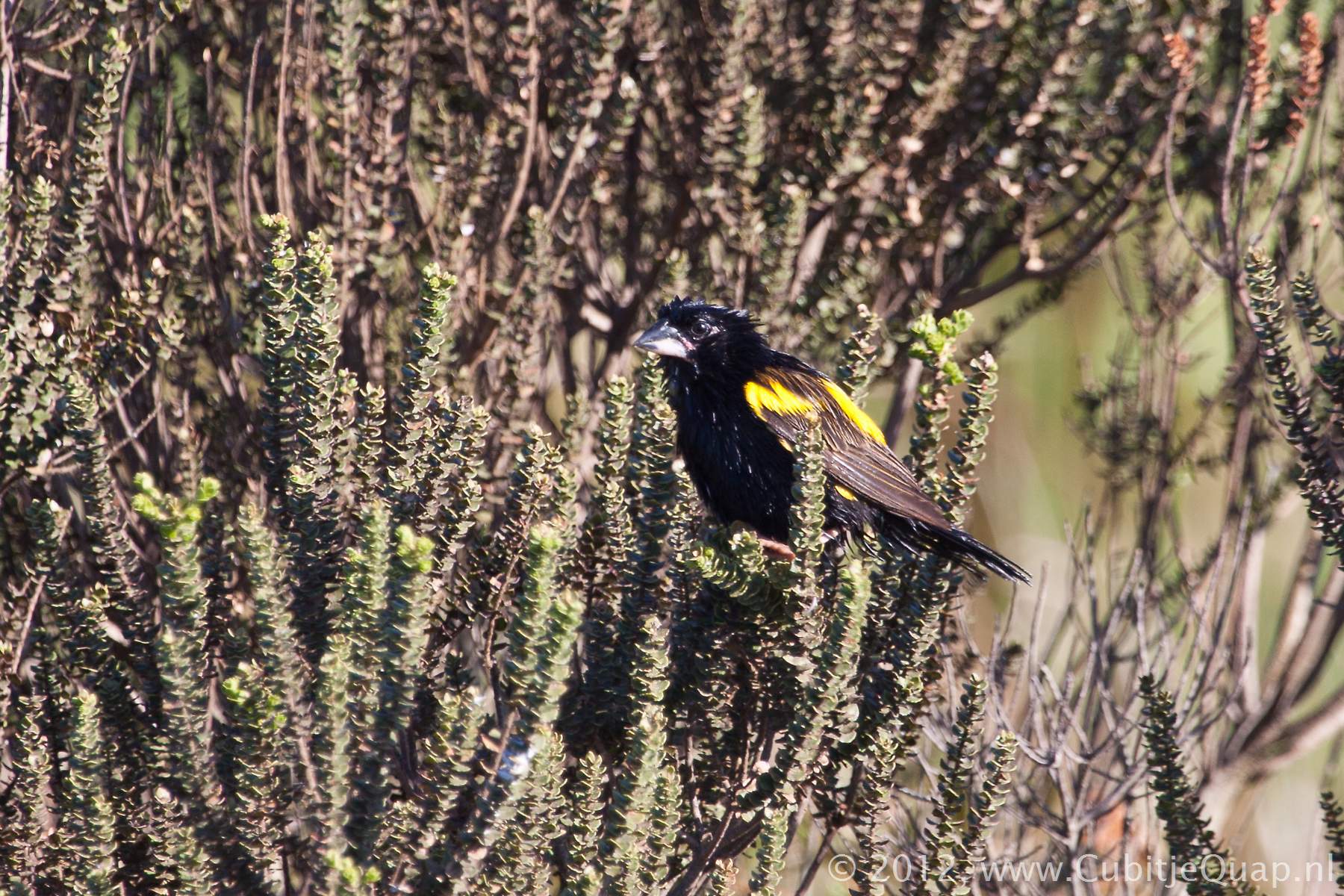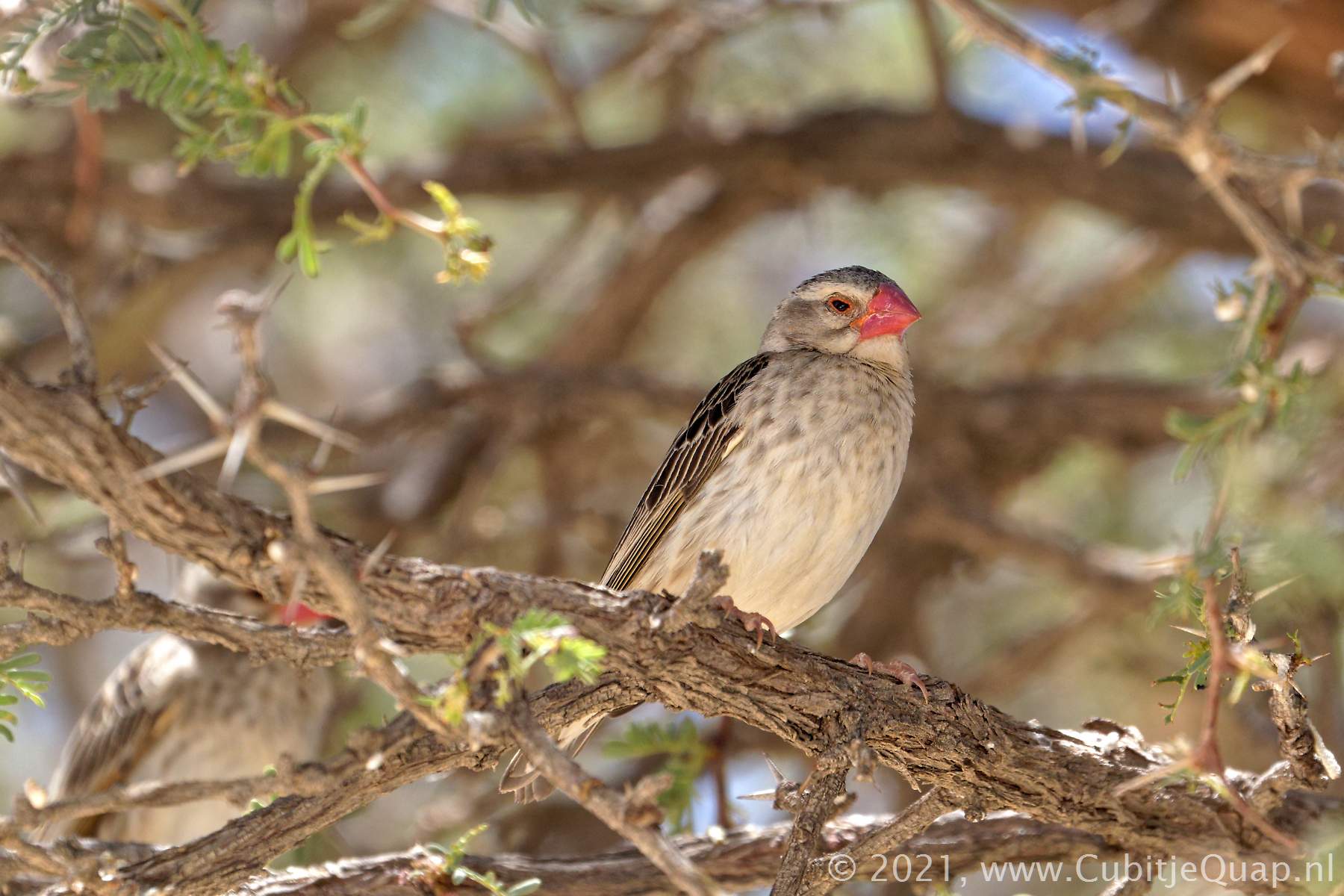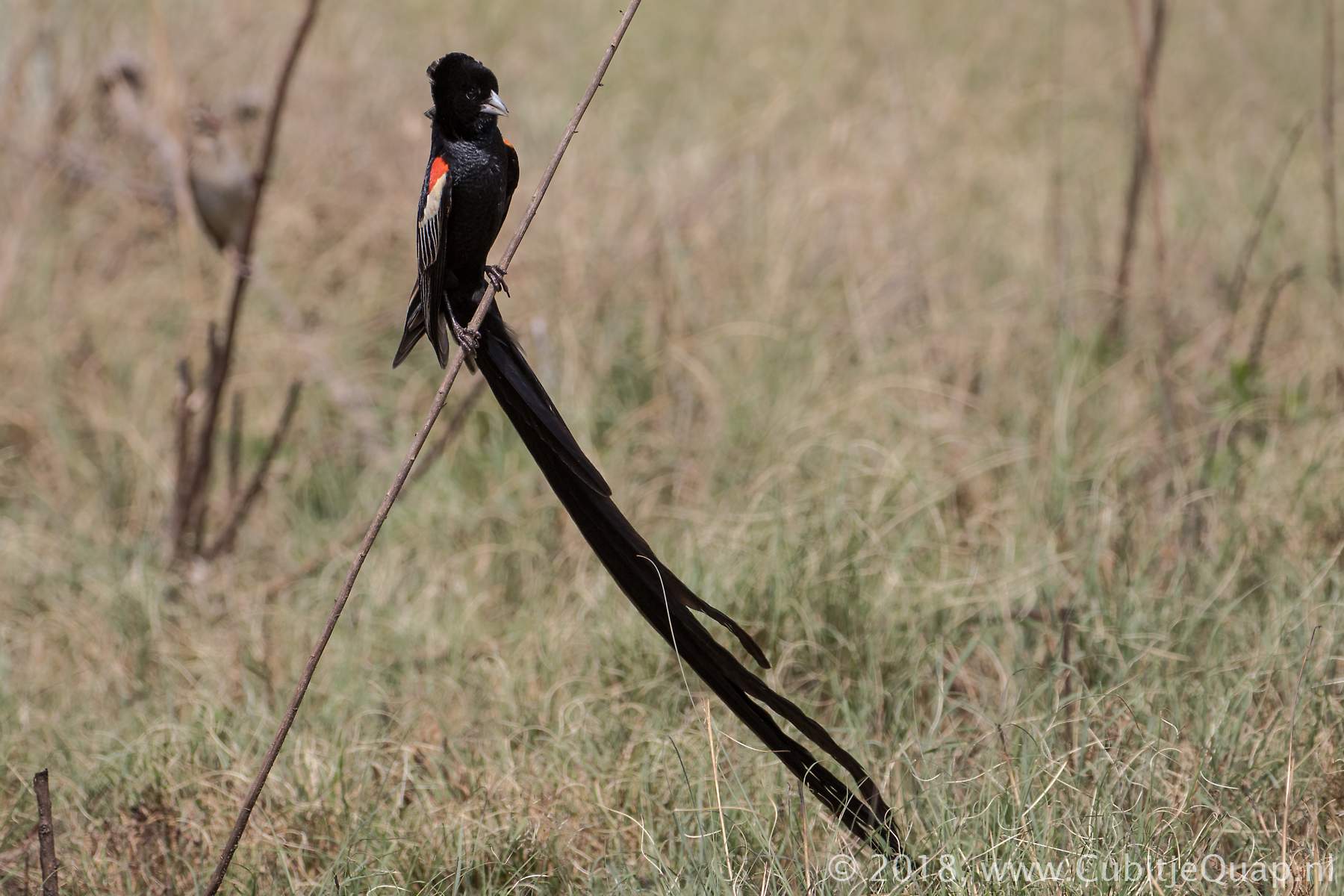Queleas, bishops and widowbirds Information page
Description
Small to medium-sized sparrow-like birds, generally referred to as 'euplectids' (from genus Euplectes) in reference to their woven nests. Although males of most subspecies are easy to identify, females and non-breeding males are extremely difficult to distinguish.All are gregarious, concregating in large mixed subspecies flocks, especially in the non- breeding season. They have short conical bills, well adapted for seed-eating, but they also take insects, especially when breeding.
Nests are woven ovals of grass built by males, lined by females and placed between upright grass stalks by most subspecies, although red-billed quelea nests in trees. Cutch of 2-4 eggs usually bluish (quelea's and bishops) or bluish with heavy dark markings (widowbirds). Females feed the chicks by regurgitation.
N.B.: In some taxonomical classification Weavers are also considered part of this group
Scientific names
Euplectes = well woven, in reference to nestsQuelea = quaill-like
Bishops
Only breeding males have the conspicuous plumage, non-breeding males resemble the drab female.They are polygynous (males take more than one mate simultaneously) and colonial, males displaying conspicuously in the breeding season. The male offers no assistance in incubation and chick-rearing. He does however protect his terrirory from other males.
They are gregarious, often in mexed-species flocks, especially when not breeding. They favour rank and tall grassland. They tend to be communal roosters in reedbeds.
Most species are probably parasitised by Diderick's cuckoo.
Quelea's
The males have distict breeding and non-breeding plumage and the bill colour may change seasonably in both males and females. They are colonial breeders in reed beds. Chicks are initially fed insect and are thereafter weaned onto vegetable matter.They are seed eaters and because of the seasonal availability of seeds, they are prone to being nomadic or migratory. Large feeding parties make use of a 'roller feeding' movement, wherenby birds at the back of the flock fly over the front birds to get to available seed. They are invariable gragarious and will feed, drink and roost (at night in reeds, by day in trees) in groups for safety.
They may be targeted by the brood-parasitic Diderick's cuckoo
Widowbirds
Males have eclipse (comparatively dull) plumage, drab like the female and characteristically long tails when breeding. They are called widowbirds because of the predominantly black plumage of the males when breeding.They are gregarious when not breeding, often in mixed species flocks with related species. They roost communally in grass or reeds.
They are polygynous breeders, whith males having up to four females. The female does all the incubation and the chick rearing. Chicks are initially fed insects and are later weaned onto seeds, the female feeding them by regurgitation.
Interesting links
Wikipediafatbirder.com




